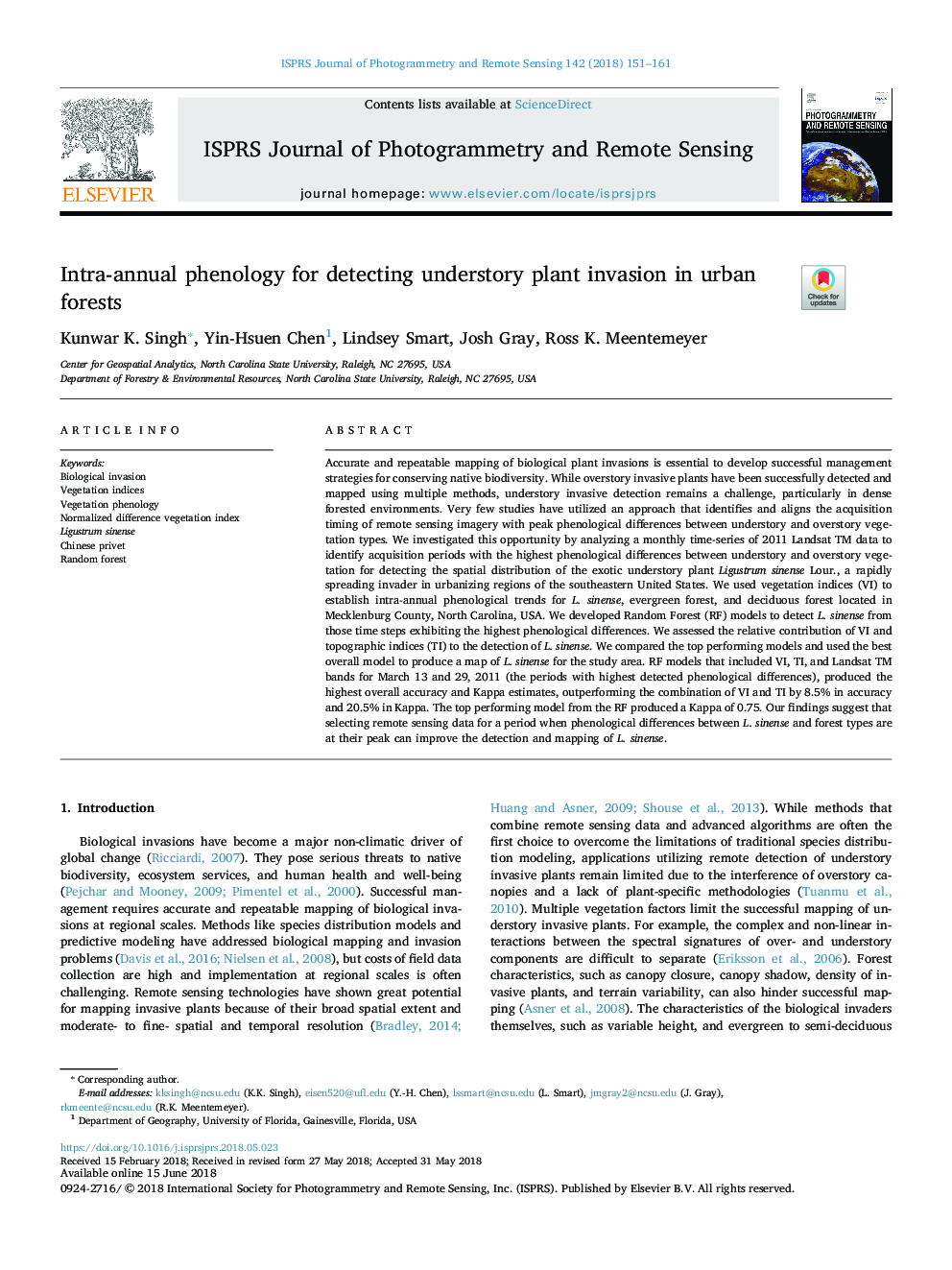| کد مقاله | کد نشریه | سال انتشار | مقاله انگلیسی | نسخه تمام متن |
|---|---|---|---|---|
| 6949082 | 1451232 | 2018 | 11 صفحه PDF | دانلود رایگان |
عنوان انگلیسی مقاله ISI
Intra-annual phenology for detecting understory plant invasion in urban forests
ترجمه فارسی عنوان
فنولوژی درون سالانه برای تشخیص تهاجم بوته در جنگل های شهری
دانلود مقاله + سفارش ترجمه
دانلود مقاله ISI انگلیسی
رایگان برای ایرانیان
کلمات کلیدی
موضوعات مرتبط
مهندسی و علوم پایه
مهندسی کامپیوتر
سیستم های اطلاعاتی
چکیده انگلیسی
Accurate and repeatable mapping of biological plant invasions is essential to develop successful management strategies for conserving native biodiversity. While overstory invasive plants have been successfully detected and mapped using multiple methods, understory invasive detection remains a challenge, particularly in dense forested environments. Very few studies have utilized an approach that identifies and aligns the acquisition timing of remote sensing imagery with peak phenological differences between understory and overstory vegetation types. We investigated this opportunity by analyzing a monthly time-series of 2011 Landsat TM data to identify acquisition periods with the highest phenological differences between understory and overstory vegetation for detecting the spatial distribution of the exotic understory plant Ligustrum sinense Lour., a rapidly spreading invader in urbanizing regions of the southeastern United States. We used vegetation indices (VI) to establish intra-annual phenological trends for L. sinense, evergreen forest, and deciduous forest located in Mecklenburg County, North Carolina, USA. We developed Random Forest (RF) models to detect L. sinense from those time steps exhibiting the highest phenological differences. We assessed the relative contribution of VI and topographic indices (TI) to the detection of L. sinense. We compared the top performing models and used the best overall model to produce a map of L. sinense for the study area. RF models that included VI, TI, and Landsat TM bands for March 13 and 29, 2011 (the periods with highest detected phenological differences), produced the highest overall accuracy and Kappa estimates, outperforming the combination of VI and TI by 8.5% in accuracy and 20.5% in Kappa. The top performing model from the RF produced a Kappa of 0.75. Our findings suggest that selecting remote sensing data for a period when phenological differences between L. sinense and forest types are at their peak can improve the detection and mapping of L. sinense.
ناشر
Database: Elsevier - ScienceDirect (ساینس دایرکت)
Journal: ISPRS Journal of Photogrammetry and Remote Sensing - Volume 142, August 2018, Pages 151-161
Journal: ISPRS Journal of Photogrammetry and Remote Sensing - Volume 142, August 2018, Pages 151-161
نویسندگان
Kunwar K. Singh, Yin-Hsuen Chen, Lindsey Smart, Josh Gray, Ross K. Meentemeyer,
